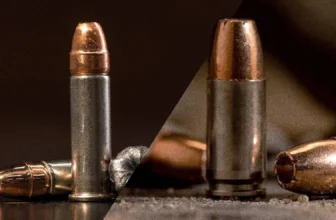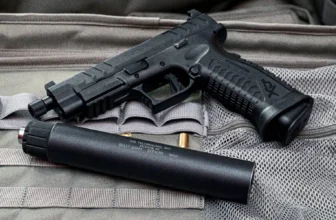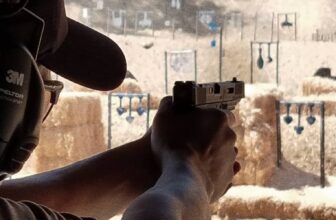Did you know that over 40% of Americans either own a gun or know someone who does? You may be a relatively new gun owner or a master of your trade when it comes to firearms and it still may feel daunting to select and purchase appropriate ammunition types, given the variety out there.
So which type of ammo should you choose? How are they different, and what do all these numbers mean? Worry not, this is a commonly asked question when it comes to ammo purchases online. Stick around to Target Sports USA and let’s learn together.
Bullet Sizes
The size of each bullet is usually what’s used to differentiate it from another bullet. These sizes often go hand in hand with a gun’s caliber.
Caliber refers to the diameter of a gun’s barrel. This correlates with the diameter of the bullet that’s going through that barrel. Caliber is usually measured by either inches or millimeters.
To be clear, the term “bullet” refers to the metal projectile that’s at the tip of the cartridge. The cartridge is the entire package that includes the casing, primer, and gunpowder.
Rimfire and Centerfire
One key differentiator between these bullets is whether they’re rimfire or centerfire cartridges. The difference between these two is in the primer.
Rimfire primers are built into the cartridge, while centerfire primers are visible from the back. This means the firing pin hits the primer for these cartridges in different ways.
If you see a little circle at the bottom of a cartridge, it’s a centerfire. Rimfire bullets are generally more affordable. To select your preferred ones and compare a few take a look at the current selection on our webpage Target Sports USA.
Always keep in mind that calibers are measured in inches and millimeters interchangeably and differ a lot in weight.
.22 LR
In terms of units sold, the .22 LR is probably the most common. It weighs very little and can be fired by both specific rifles and pistols.
These bullets are known for their low-stopping power and lack of kick. Some would say it’s not much more powerful than a pellet gun, especially when fired from a long rifle. Consider this as the “beginner” option when at the firing range.
.380 ACP
The .380 ACP, also known as the 9mm Kurz ( short), is often used with pocket pistols. These bullets are known for their low recoil and stopping power at the range.
While it’s not very effective at medium or long ranges, the .380 is growing in popularity. Also available at online ammo retailers. It’s perfectly adequate for smaller pistols that are meant for basic defense.
9mm Luger ( 9 x 19 mm)
While other bullets confusingly have “nine millimeters” in their names, this caliber is usually what people refer to when they hear “9mm.” These bullets are small yet incredibly popular and are great for defense.
The diameter of the 9mm is the same as the .380 ACP, but there’s much more gunpowder stored in 9mm cartridges. Depending on the type of bullet, 9mm cartridges deliver good to excellent stopping power.
.45 ACP
The .45 ACP was designed by John Browning to fit his famous 1911 pistol and has remained a staple of firearm manufacturing ever since. It’s a pretty big bullet and has the stopping power to go with it.
Many police forces and military units used or currently use .45 ACP rounds. While it’s not a caliber you’d hand to a first-time gun owner, it remains an incredibly popular choice nonetheless.
7.62x39mm
The 7.62x39mm is often found in AK-47 magazines. It has excellent knockdown power and is usually easy to find. Keep in mind this is a rifle round.
.223 / 5.56x45mm
The “two two three” has the same diameters as the 5.56, leading to some interchangeability between the two cartridges. Since the 5.56 has higher pressure, a .223 rifle should not fire a 5.56 round.
These cartridges are used in M4s, M16s, and other similar rifles. Many debate its effectiveness to this day, but the 5.56/.223 has some upsides, such as its low recoil.
Bullet Types
When it comes to different types of ammunition, you need to consider the type of bullet you’re using. There are many types of bullets included in different cartridges, which warrants a closer look.
Full Metal Jacket
These bullets have a soft metal center that’s circled by harder metal like lead or copper. They’re often rounded out or flat on the ends, and create small holes when entering a target.
Hollow Point
Hollow points are the top choice for home defense and police units because of their ability to expand once it hits a target. This is the main difference between the full metal and jacketed hollow point bullet. The stopping power that hollow points provide makes it one of the most popular bullets out there.
Open Tip
Open tip bullets often get confused for hollow points because of an opening at the top, but that’s more of a manufacturing necessity. These bullets are preferred by rifle owners because of their effectiveness at range.
Ballistic Tip
If you combine the aerodynamics of a full metal jacket round with the power of a hollow point, you get something like the ballistic tip. These bullets are perfect for hunting or precision shooting.
Choosing Ammunition Types for Beginners
If you’re purchasing a firearm for the first time, choosing between different ammunition types can be tough. Use this guide to help you understand what each caliber and bullet type entails so you can make the right choice! Save and share this guide by Target Sports USA and Contact us today for further inquiries.






